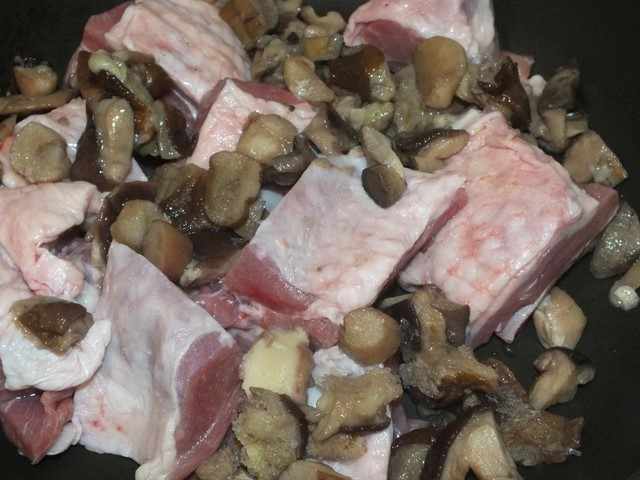Sourdough bread baking. Master Class
And now he offers to plunge into the mystery of baking homemade bread with this leaven.
With the dough I have strictly, I always measure all the ingredients on the scales or in spoons, glasses. I never do it "by eye", maybe pancakes.
For bread dough you will need:
- active starter culture about 150g
- liquid (water, milk, potato broth) 320 ml
- 1 level teaspoon salt
- 1 teaspoon sugar, optional
- barley malt 2 tablespoons, optional, optional
- flour 500 g
If I add some bread dough in the morning, I refresh the leaven the night before. Let me remind you that between feedings you need to store it in the refrigerator in a closed container.
If liquid sourdough is used, then we feed it in proportions, when water and flour are in equal amounts (measured in grams !!!). For example, 50 g sourdough, 75 g water, 75 g wheat flour. *
* I use the highest grade flour, but you can, and someone says that it is even better, to use flour of the 1st grade
You can take more water and flour, the leaven will easily cope with a large amount. For example, 50 g of sourdough, 100 g of water, 100 g of flour. The most important thing is that there is the same amount of flour and water. Sourdough of this consistency is conventionally called 100% moisture. It is convenient because it is easily diluted in water without leaving lumps. But by the time you are about to start the dough, it may already pass its peak of activity and fall off. It's okay, you can use it. Better, of course, if it is at the maximum rise, as they say, an active leaven. And keep in mind that it can increase three times, so take the container with a good margin, otherwise you will collect the leaven on the table, it easily seeps under the lid. Cover the top of the container so that the leaven does not dry out.
A little more about the advantages and disadvantages of liquid sourdough.
- It rises quickly, can "run away", but it also quickly settles. It takes 6-8 hours to rise, depending on the ambient temperature.
- Liquid sourdough can get hungry faster, it needs to be fed more often so that it does not ferment. It is advisable to feed a relatively young starter culture at least once a week. I know that housewives can keep a more mature / adult sourdough starter on a starvation diet for much longer. But I have no such experience, tk. I use it for its intended purpose several times a week.
- Baking with liquid sourdough is more acidic than the usual commercial or conventional yeast.
I store and use my starter in a thicker form. It is called 50% humidity. I put my sourdough into this state at the age of 6 months. For feeding, I already use other proportions: 1 part of water and 2 parts of flour (in grams !!!). I always keep the starter in an amount of 50 g in a glass jar under the lid, in the refrigerator, so I take these 50 g of sourdough, add 50 g of water to it, stir with a fork, and add 100 g of flour. It turns out the consistency of the dough, which I beat with my hands. I do this whole process in a large bowl, in which I will then start the dough for bread. I cover the bowl with foil (in my case, this is a plastic shower cap) and leave it on the table until morning.

Sourdough after kneading during feeding:

Approached (active) thick starter culture after 12 hours:

The thick leaven usually doubles in size. It takes more time for this than liquid, but even in this state it is able to stay much longer.
A little more about the advantages and disadvantages of thick sourdough.
- This leaven never escapes. There is no surplus left from it. Without feeding, it can be stored longer and does not oxyderate.
- The baking itself with thick sourdough is much less acidic. And an adult leaven does not give sourness at all.
True, it is more difficult to dilute it with water, especially if it has been standing for a long time without feeding, it can dry out even in a closed container.
I do not try to dilute it completely, the lumps still remain, they integrate well into the dough, and this does not affect the final result in any way.
So, now about bread. Here we have a suitable active leaven, whether it is liquid or thick, it does not matter. We measure out 150 g. With thick, I make it easier. I put 50 g in a jar and put it in the refrigerator. On what is left in the bowl, I make some dough.

As a liquid component, my favorite is potato broth. I add the liquid a little warm, body temperature. I add salt and sugar. And stir it.


Sometimes I add barley malt. I love the flavor it gives to the bread. It is also believed to improve the rise of the dough, but to be honest, I did not notice the difference.

I grind the malt in a coffee grinder and sift it through a sieve.



The dough must be kneaded thoroughly to make gluten work. At least 10 minutes, until the dough is elastic, until the hands are clean.



I grease the sides of the bowl with vegetable oil. I round the dough and put it in the bowl. I cover it with a film or a shower cap and place it in a warm place.
After an hour, I take out the dough, it has not yet begun to rise, but it has become more elastic and can be stretched. I take the dough, stretch it as far as its elasticity allows, so that it does not tear, and fold it three times. Can be folded twice, also crosswise. Then I form a ball, collecting it from the bottom.









